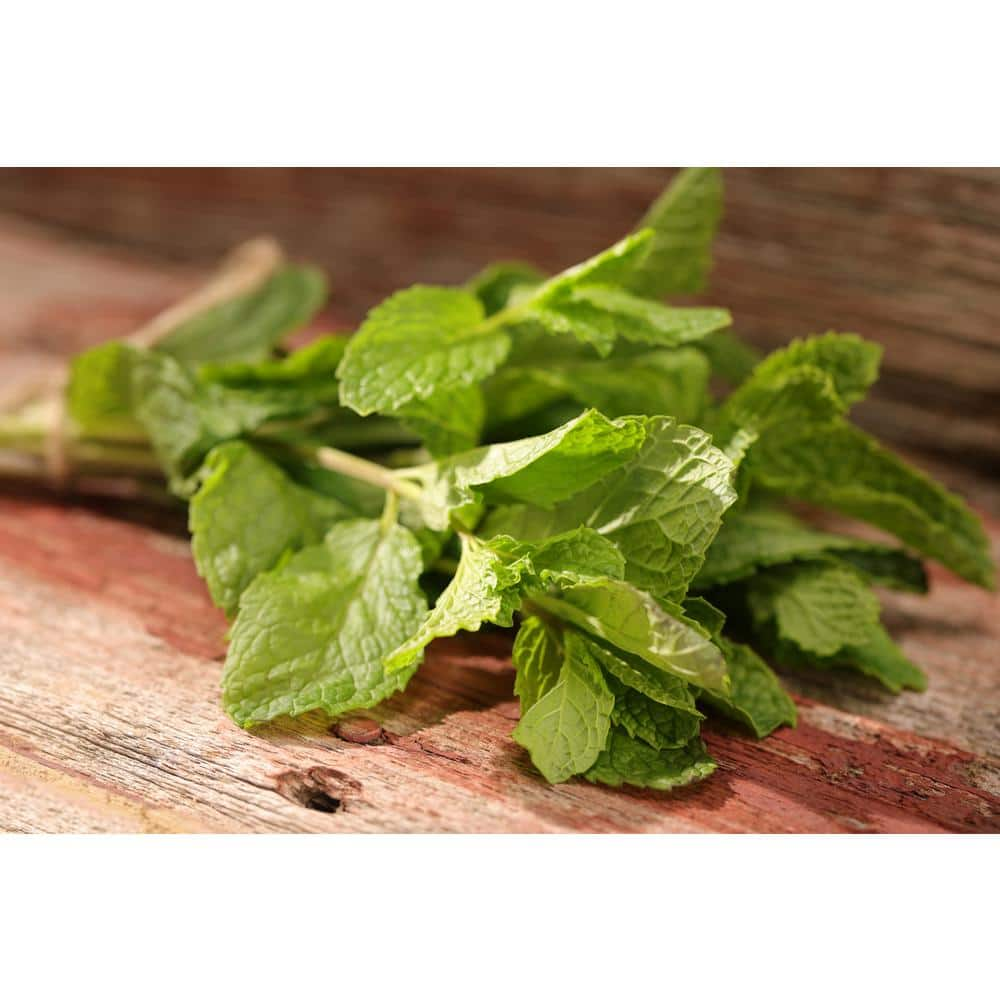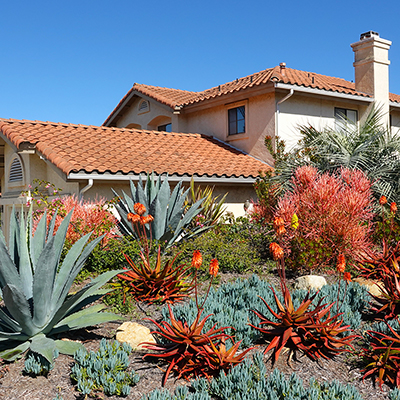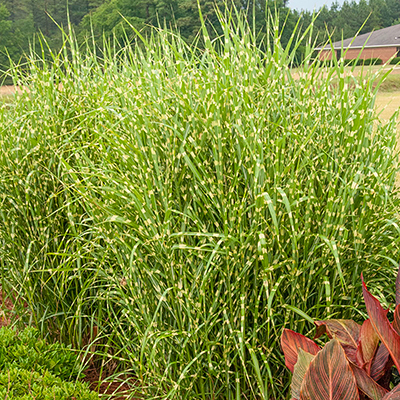8 Grass Alternatives for Lawns
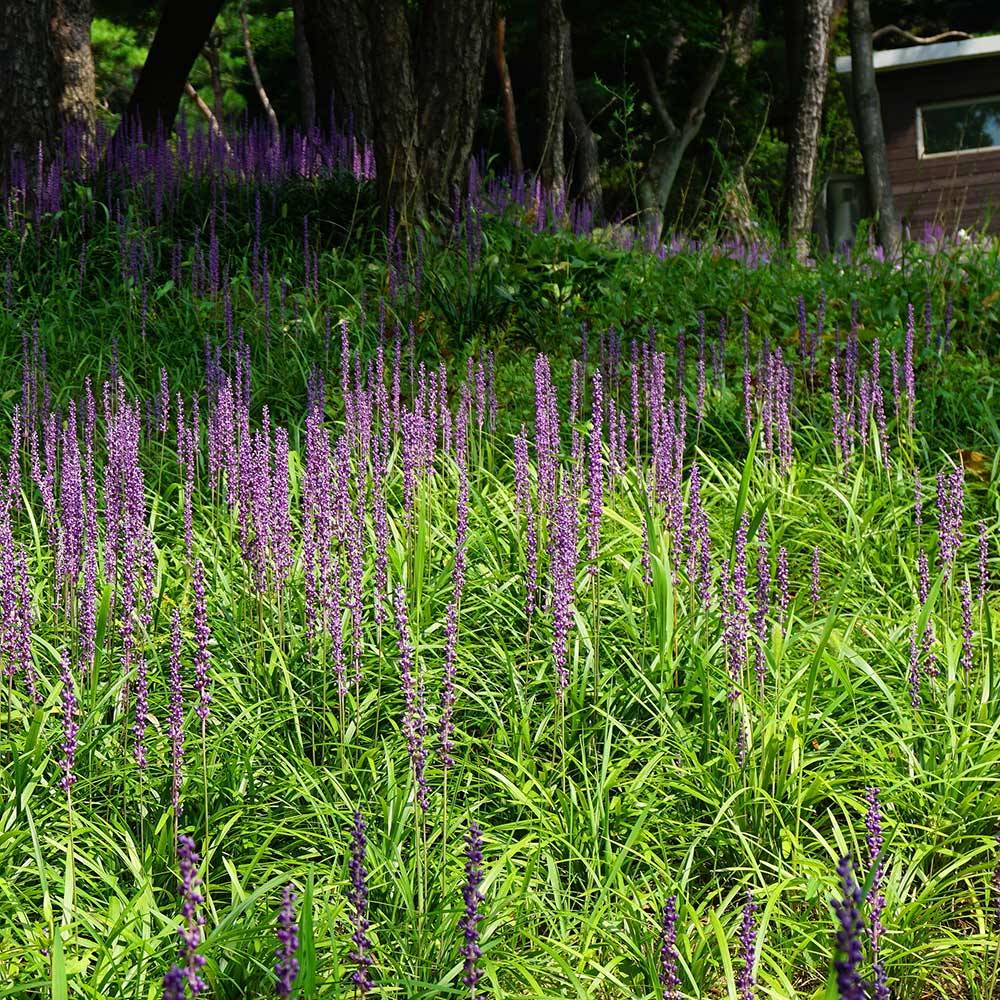
Last updated September 7, 2023
There's more to lawns than the traditional grass turf that we've come to expect. The typical grass lawn is not the only possibility for your outdoor space, and you’ll discover there are many sustainable, low-maintenance alternatives for your lawn.
Lawns can be more than the grass yards you grew up running and playing on. In this guide, you'll learn eight alternatives to traditional grass lawns, including ground covers, wildflower meadows and clover lawns.
Two points to keep in mind: timing and scale. There are good reasons to keep a traditional grass lawn, but if you’re replacing turf, you don’t need to take it out all at one time. You can try a few of these ideas and, over time, reduce or replace your grass lawn.
Table of Contents
Grow a Clover Lawn
Grow a Walkable Herb Lawn
Grow a Groundcover Lawn
Add Ornamental Grasses
Create a Rock Garden
Sow a Wildflower Meadow
Grow a Clover Lawn

Clover is often grown as a cover crop, or a green manure, because it fixes nitrogen in the soil. The nitrogen nourishes the soil and helps plants (like grasses and vegetables) grow strong and healthy. When turned into your grass lawn, it will fertilize the soil.
Clover is drought tolerant and is green year-round. Mix it in lawns that go dormant to have year-round green.
Dog owners take note: unlike typical grass lawns that react badly to dog urine, clover lawns are resistant to dog urine stains.
Clover can be a short or long term solution for your lawn. You can use it to build up the soil for a future planting of grass or flowers.
A downside to clover lawns is that the tasty plant is beloved by four-legged wildlife. If deer are a problem in your garden, you'll want to avoid planting clover. It will be a buffet for the deer.
Grow a Walkable Herb Lawn

Many herbs make drought-tolerant, pest-resistant turf substitutes. Fragrant, sturdy herbs like creeping thyme and creeping oregano, chamomile and savory are low-growing and can handle some foot traffic.
Add larger plants like lavender and rosemary behind the low-growing herbs. Then create a foot path with pavers or gravel or mulch through your herb-scaped lawn.
When replacing a lawn with herbs, make sure the soil is quick to drain. If you have clay soil, amend it with plenty of organic compost before planting. Once perennial herbs are established, they’re low maintenance. Give them fertilizer a couple of times during the growing season, replenish mulch as needed, and trim frequently to use in your kitchen. Learn how to harvest herbs.
Grow a Groundcover Lawn
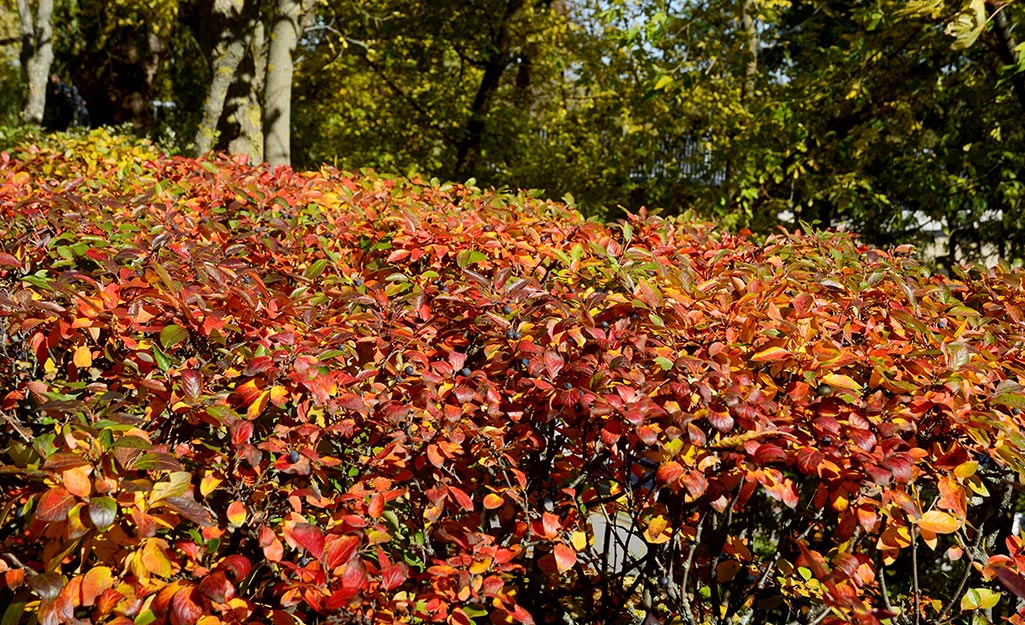
Go to ground covers for easy care options for your lawn. When you plant tried and true perennial ground cover plants, you create pollinator habitat, suppress weed growth and increase plant diversity in your landscape.
Ground covers are adaptable to shady areas that are difficult for turf. Popular ground covers include liriope, jasmine, creeping Jenny, ajuga and mondo grass. Liriope, also called lilyturf, can be invasive in some areas of the country. Check with your state’s list of non-native invasive plants before planting. Learn more about ground covers.
Add Ornamental Grasses
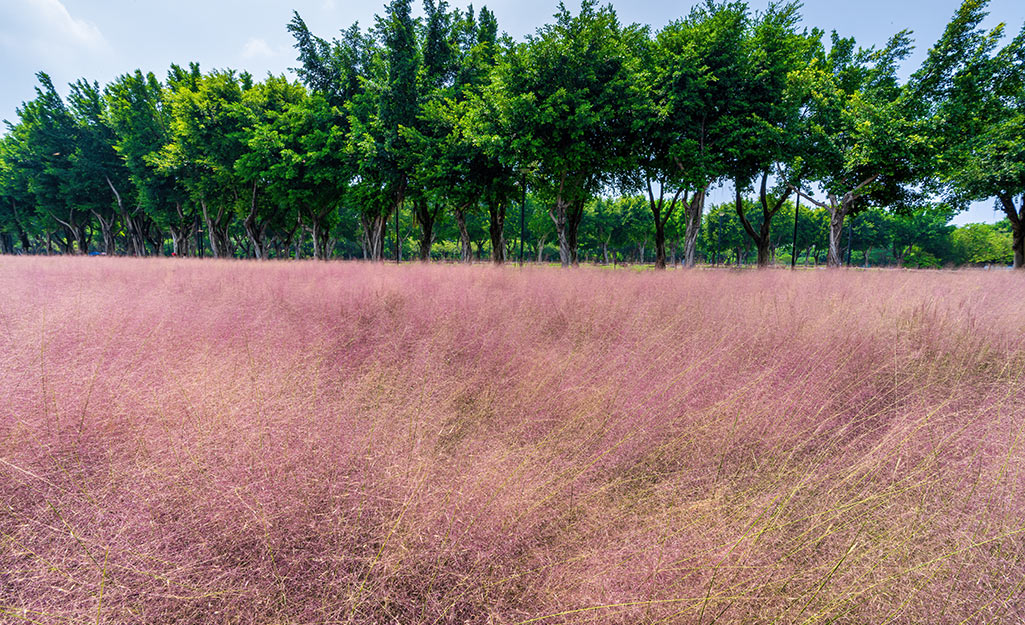
Ornamental grasses make a dramatic alternative lawn. This category includes various fountain grasses, and others like maiden grass, zebra grass, switch grass and Muhly grass. These sturdy plants add texture, form, movement and sound to your landscape.
Perennial ornamental grasses are easy to install and, when they’re established, require little maintenance beyond annual fertilizer applications and division every few years. They’re pest and disease resistant, too.
Learn more about the types of ornamental grasses that are best for your region.
Create a Rock Garden
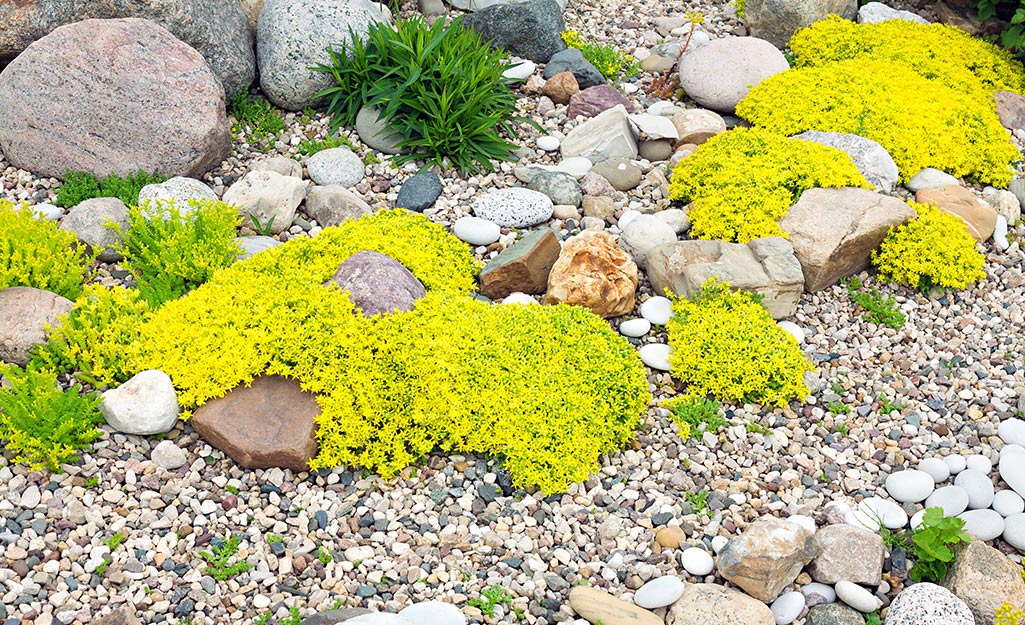
In dry areas, the best alternative lawn could be a rock garden dotted with drought-resistant plants. Rock gardens featuring stonecrop sedum plants and native shrubs can be colorful and vibrant throughout the seasons. Sedum tiles are an efficient way to plant succulents as a border or between pavers.
In dry areas, the best alternative lawn could be a rock garden dotted with drought-resistant plants. Rock gardens featuring stonecrop sedum plants and native shrubs can be colorful and vibrant throughout the seasons. Sedum tiles are an efficient way to plant succulents as a border or between pavers.
Experts say a gravel garden requires 80 percent less maintenance than a conventional garden. These types of gardens need less water and fertilizer over time. Once established, rock gardens thrive on just rainfall. Learn the best kind of gravel to add to your landscape.
You can create a rock garden with rocks currently on your property and fill in with gravel or stones before filling in with plants. Be inspired for rock garden designs.
Sow a Wildflower Meadow
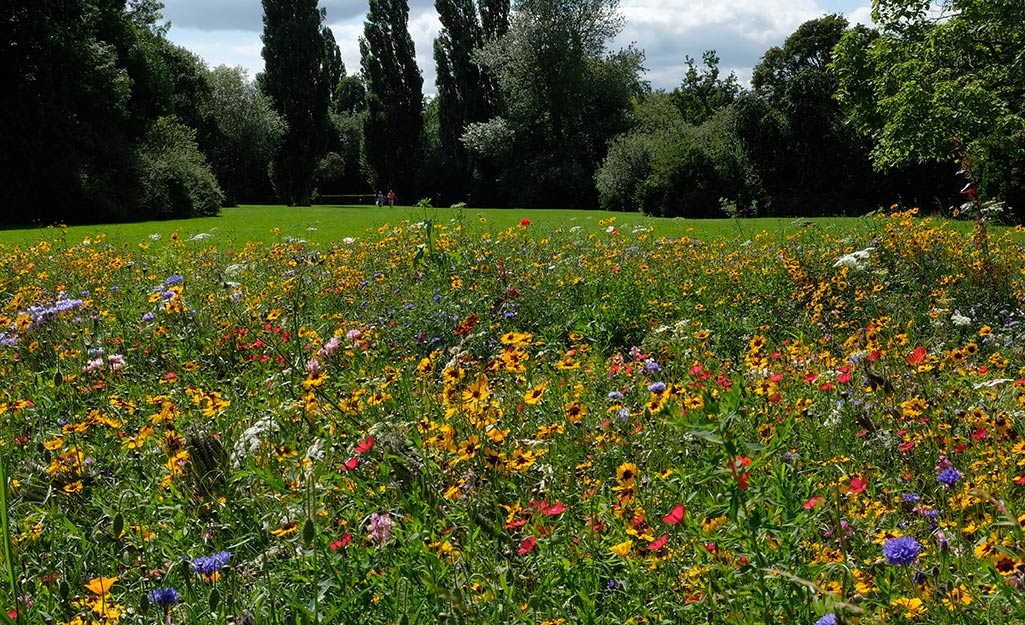
If you have a sunny or partly sunny space, grow a native plant or wildflower meadow. These types of spaces support beneficial insects and pollinators and, unlike typical lawns, change with the seasons.
Meadows take a few seasons to establish. Fall and early spring are the best seasons to start sowing flower seeds. Begin by amending the soil with rich organic compost to improve the drainage at the site. Sow seeds according to package directions and water to supplement rainfall.
Don’t be discouraged if the first year is a flop. Many wildflowers bloom better in the second year.
Gather Moss Instead of Grass
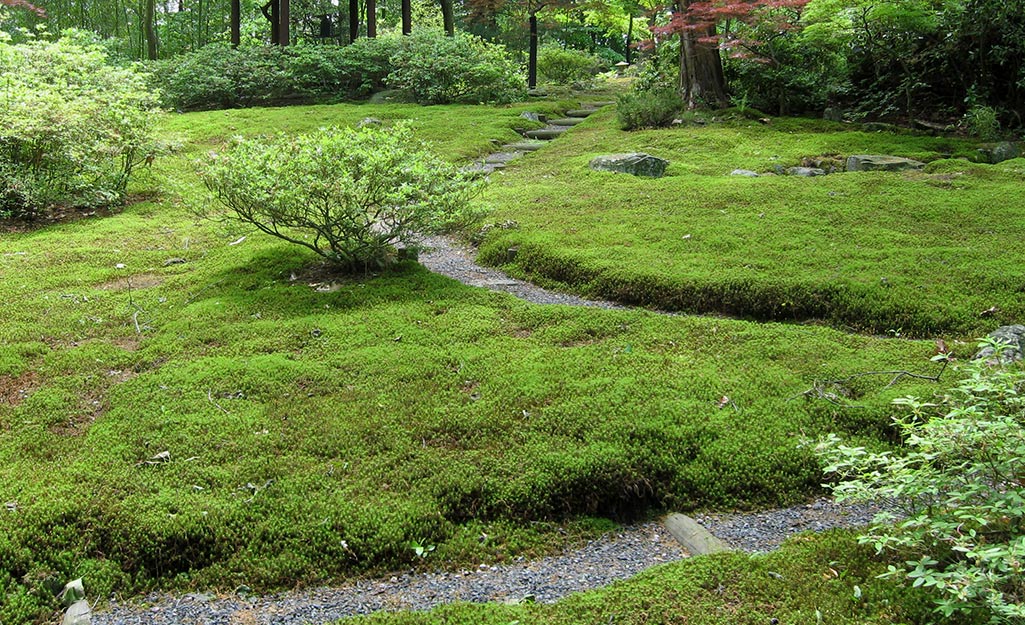
If you have shade and a rainy climate, moss may be the best way for you to have a green lawn. The best way to know if a moss garden will work for your site is if moss is already growing in your garden.
You can purchase moss or try to propagate moss. Be careful of harvesting moss from public spaces like road sides and hiking trails.
Add moss to your garden by transplanting moss fragments on ground that’s been cleared of other plants. You can also take bits of moss and blend them with water to make a moss slurry that you can paint where you want it to grow.
Install Artificial Turf

Artificial grass lawns can be a low-maintenance solution for your home landscape. They’re pet friendly; you won’t have to deal with brown patches from unruly dogs. They don’t require chemicals like live grass lawns. Although artificial lawns don’t require irrigation, it’s recommended if you have pets to keep it clean and pleasant smelling. Read the cost guide on installing artificial grass.
Tips for Installing Alternative Lawns
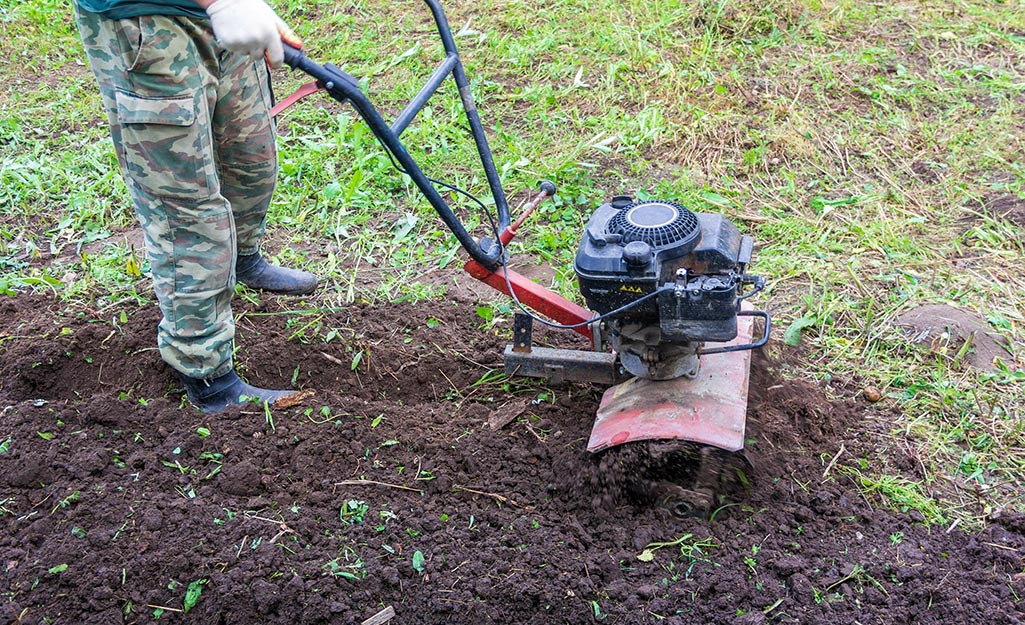
Most alternative lawns will require healthy, well-draining soil before planting. Once you remove the existing grass or sod or weeds from the area, till the soil and amend with organic compost.
Changing the type of lawn you have will probably take several seasons to get established. You may decide to go all-in and sow clover or wildflower seeds across a wide area. You can also take a gradual approach and try one or two ideas over smaller spaces, gradually reducing the size of the traditional grass lawn.
In addition to the lawn alternatives, know that you can grow a traditional lawn with organic methods and it can also be low maintenance. Look for slow-growing rye grass seed blends that require less mowing.
Tips for Caring for Alternative Lawns

When it’s time to mow your natural alternative lawn, switch to a sustainable mower like a reel push mower, or a rechargeable electric mower.
Save water on your alternative lawn when you install an irrigation controller and set it to water in the early morning, not during the day or evening. This will reduce water loss due to evaporation and in the case of nighttime watering, the spread of fungal diseases.
With a natural lawn, keep in mind that when you build healthy soil and plant the right grass for your area, the weeds will stay in check.
Whether you need the right planters, seeds or potting soil, The Home Depot delivers
online orders
when and where you need them.









